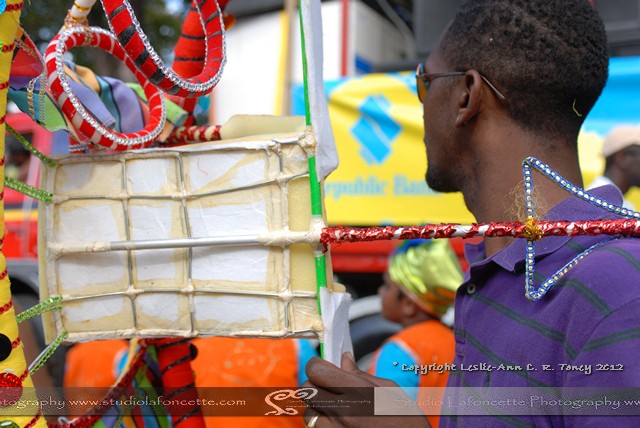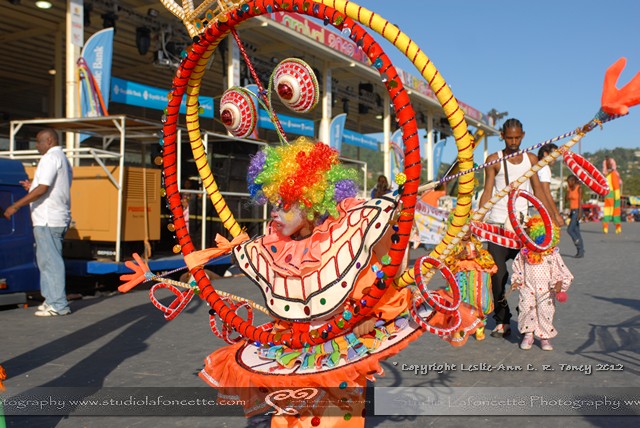What makes Trinidad mas stand out from some other carnivals is the broad emphasis on masqueraders individually carrying their costumes – large or small – on their person, even children. Floats are non-existent and masqueraders in vehicles – termed lorry mas and comprising (usually) the elite in costume standing in a truck to separate them from the masses – is generally a thing of the past. To this end mas designers and structuralists use light materials and as efficient as possible harnessing techniques to usually create a back pack or harness. This is fitted to the masquerader and the costume is designed around the backpack and ultimately, if done well, covered or disguised (as pictured above).
For the enormous adult king and queen costumes which often extend to over 25 ft in width and higher than 15 ft, rather than a backpack or harness, a mainframe is constructed and supported on large wheels, and the masquerader has to pull the structure. A well-constructed adult king or queen costume can span several feet in height and width and be carried by a backpack; however, these are a rare find, and tend to be smaller. The construction of the costume is a part of judging for the adult and junior individual competitions. Judges inspect costumes and evaluate the construction back stage prior to competition.
This carrying the mas is a continuation from the African tradition of masking where mas is worn on the person. The individual becomes the mas, there is no separation.

